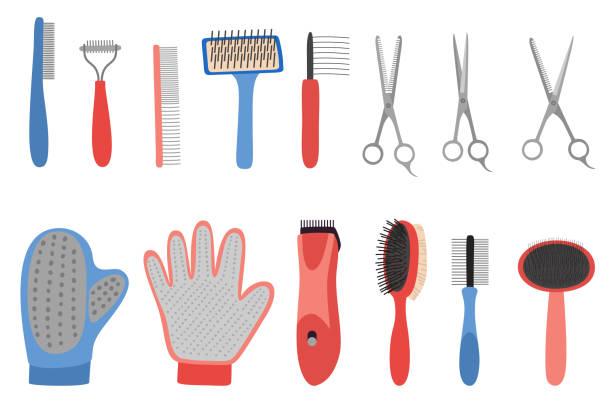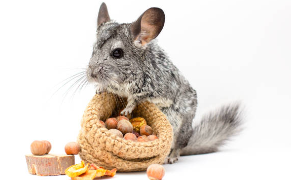Ah, the chinchilla – a fluffy bundle of joy.
With fur that seems so thick and luxurious, it begs the question, “Can you shave a chinchilla?”
As a seasoned expert on the topic, I can assure you, there’s a lot to unravel here.
So, let’s embark on this fuzzy journey, because who can resist a deep dive into the wonderful world of chinchilla grooming?
Table of Contents
Understanding the Natural Fur of Chinchillas
Now, before we get to the nitty-gritty, let’s start with the basics. Chinchillas have fur like no other. Its properties are fascinating, and understanding them sets the foundation for our discussion.
The Importance of Chinchilla Fur for Thermoregulation
Did you know chinchilla fur isn’t just for looks? It’s essential for their temperature control. Their native Andean habitat is cold, so their dense fur keeps them warm. It’s a literal life-saver in freezing temperatures!
Unique Properties of Chinchilla Fur
You’ll be amazed to learn that a single hair follicle can contain around 60 hairs! This density not only provides warmth but also helps in repelling dirt. It’s a masterpiece of nature’s design.
Debunking Common Myths about Shaving Chinchillas
The web is awash with myths about shaving these fluffy creatures. So, let’s clear the air, shall we?
Myth 1: You Can’t Shave a Chinchilla
Can you shave a chinchilla? The truth is, technically, you can shave a chinchilla. It’s physically possible. But the critical question is: should you? The general consensus among experts is a resounding “no”. Chinchillas’ dense fur serves vital purposes beyond being a magnet for “awws” and “oohs”.
Myth 2: Shaving Helps with Fur Matting
It’s easy to assume that, much like a sheep’s wool, shaving can help prevent fur matting. In reality, this is a misstep. Shaving can disrupt the natural growth of the chinchilla’s fur, leading to uneven lengths and increased chances of tangles and mats.
Instead of making their coat more manageable, shaving may exacerbate the problem.
Myth 3: Shaving Keeps Chinchillas Cooler in Hot Weather
Intuitively, less fur might seem like a cooler option during scorching days. However, a chinchilla’s fur isn’t just an aesthetic feature.
It acts as insulation against both cold and heat. Removing this protective layer can make these creatures more vulnerable to temperature spikes, potentially endangering their health.
Myth 4: Shaving Prevents Overheating
Continuing from the previous point, one might think that shaving aids in preventing overheating. This notion is misguided. A chinchilla’s thick fur serves as a temperature-regulating mechanism.
Without it, they’re at a higher risk of overheating, especially when exposed to warm environments or direct sunlight.
When Shaving Chinchillas is Necessary?
While we’ve emphasized the risks of shaving chinchillas, there are exceptional situations when trimming, not full shaving, might be needed.
Medical Conditions Requiring Fur Trimming
On rare occasions, specific medical conditions or skin infections might necessitate trimming parts of the fur for better access or treatment.
For instance, if a chinchilla has a wound or localized infection, the surrounding fur may need to be trimmed to ensure proper cleaning and medication application.
Professional Veterinary Guidance and Assistance
Always remember: don’t go DIY when it comes to your chinchilla’s health. If you suspect your furry friend needs some grooming or medical attention, consult a vet. Professionals have the expertise to determine the best course of action, ensuring your chinchilla’s well-being remains the top priority.
The Potential Risks and Consequences of Shaving Chinchillas
Shaving a chinchilla might seem like a benign act, akin to giving your dog a summer haircut. However, chinchillas aren’t just any regular pets. Their unique fur and physiological attributes mean that shaving them can bring about several unintended consequences.
Skin Irritation and Sensitivity
First and foremost, chinchillas have delicate skin. Removing their protective fur layer can expose them to irritants, leading to itchiness, redness, or even infections. Without the cushioning layer of their dense fur, even a simple touch could cause discomfort or harm.
Sunburn and Exposure to Harmful UV Rays
Chinchillas in the wild are accustomed to cool, shadowed environments. Their skin isn’t designed to handle direct sunlight. A shaved chinchilla is susceptible to painful sunburns and longer-term damage from UV rays, similar to how human skin reacts when exposed without protection.
Disruption of Natural Fur Growth Cycle
Chinchilla fur has a unique growth cycle. Shaving can disrupt this, potentially causing fur to grow back unevenly. This can increase the likelihood of matting or create patches that lack the usual density, exposing the chinchilla to temperature vulnerabilities.
Psychological Impact on Chinchillas
Beyond the physical repercussions, shaving can induce stress in chinchillas. They could become more skittish, less sociable, or even show signs of depression. Their fur is a natural part of their identity, and suddenly taking it away can be a significant psychological blow.
Proper Grooming and Fur Maintenance for Chinchillas
Caring for a chinchilla goes beyond simply admiring its fluffy allure. Proper grooming and maintenance are essential to ensuring your furry friend’s health, comfort, and happiness. So, how can you pamper your pet in the right ways without the risks of shaving?
Regular Dust Baths for Fur Health
Dust baths aren’t just a delightful chinchilla quirk. These baths are crucial for maintaining their coat’s health. The fine dust particles help absorb oils, cleanse the fur, and maintain its soft texture.
Ideally, provide a dust bath 2-3 times a week, ensuring the dust is specifically designed for chinchillas.
Brushing and Untangling Fur
Regularly brushing your chinchilla helps prevent tangles and keeps its coat in top-notch condition. Opt for a soft-bristled brush, and make sure to be gentle, especially if you encounter minor knots.
Addressing Fur Matting Issues
If mats do form, it’s essential to address them promptly. Neglected mats can tighten and tug on the skin, causing discomfort. Gently work through the mat with your fingers or a specialized comb, taking care not to pull or hurt your chinchilla.
Recommended Tools and Brushes for Grooming
The market offers various tools for chinchilla grooming. Yet, not all are created equal. Prioritize soft brushes that glide easily through dense fur. Combs with wide and rounded teeth can be effective for tackling more stubborn tangles without causing harm.

Techniques for Preventing and Removing Tangles or Mats
Regular brushing is your primary defense against mats. But if you do encounter one, hold the base of the fur with one hand and work on the tangle gently with the other. This minimizes any pulling on the skin.
For persistent mats, a quick visit to a vet or professional groomer is advisable.
Alternatives to Shaving for Fur Maintenance
When it comes to chinchilla care, their luxurious fur often becomes a focal point. And while shaving might seem like an option to manage it, the risks usually outweigh the benefits.
Luckily, there are safer and more effective alternatives to ensure your chinchilla’s coat remains in top condition.
Nutritional Supplements for Healthy Fur
A radiant chinchilla coat starts from within. Ensuring they receive the right balance of nutrients can make a significant difference in fur health. Sometimes, supplements like omega fatty acids can elevate the fur’s natural sheen and softness.
But it’s crucial to remember: always introduce any supplements under the guidance of a veterinarian to ensure they complement your chinchilla’s diet.
Providing a Comfortable and Cool Environment
Chinchillas are naturally designed for cooler climes. A consistently cool environment can prevent fur issues that arise from overheating, such as patchiness or loss.
Ideally, their living space should hover between 60-70°F (15-21°C). Keeping their cage shaded and well-ventilated ensures the fur retains its lushness and vitality.
Regular Veterinary Check-ups and Fur Assessments
Just as we need regular check-ups, so do our furry friends. Regular visits to a vet can highlight any concerns or potential threats to fur health. These professionals can offer guidance on issues like skin conditions, fur matting, or other concerns before they become problematic.
Conclusion
Chinchillas are remarkable creatures, deserving of the best care. While the idea of a shaved chinchilla might sound intriguing, their fur is an integral part of their identity and well-being.
It’s always best to approach grooming and fur care informed, gentle, and with love.
FAQs
Is it safe to shave my chinchilla?
No, shaving can lead to skin irritations, increased risk of sunburn, and psychological stress for chinchillas.
Can shaving help with my chinchilla’s fur matting issues?
Shaving is not recommended for fur matting; instead, regular grooming and brushing are safer alternatives.
How can I maintain my chinchilla’s fur without shaving?
Regular dust baths, gentle brushing, and a balanced diet are key to maintaining healthy chinchilla fur.
Alina Hartley is a small-town girl with a ginormous love of bearded dragons. It all started with Winchester, a baby bearded who was abandoned at the shelter by his former owners because of a birth defect that caused one front leg to be shorter than the other. Alina originally went to the shelter looking for a guinea pig, but one look at Winchester and it was love at first sight. From that day on, Alina has dedicated her life to learning everything she can about bearded dragons. She loves helping new beardie parents start their incredible journey with these magnificent reptiles.
Follow her on:
LINKEDIN
TWITTER.
Read her latest articles HERE
Learn more about her HERE.

